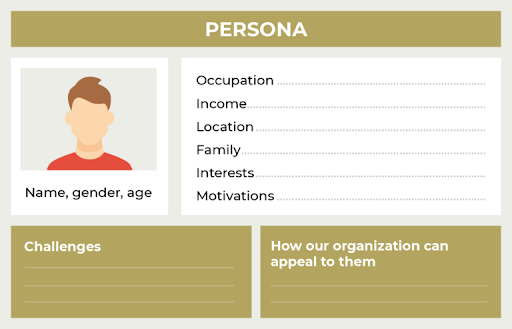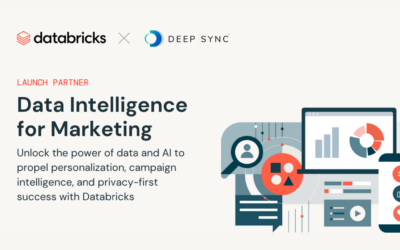Given the rise of artificial intelligence (AI), social media algorithm updates, and other recent marketing trends, your nonprofit’s team has to constantly adapt to keep up with new industry norms. At the same time, it’s important to keep your messaging consistent across different marketing channels so users can easily identify your content as belonging to your nonprofit.
That’s where omnichannel marketing—or providing and creating seamless content experiences across your marketing channels—comes in. This structure will help you stay ahead of the curve and reach new audiences while preserving a consistent brand image. From identifying your target audience to crafting personalized messages, this guide will help you set your omnichannel marketing approach up for success.
Benefits of Omnichannel Marketing for Nonprofits
Omnichannel marketing strategies—which use all marketing channels to create a unified customer experience—have significant benefits for nonprofits. For instance, omnichannel marketing allows you to:
- Improve customer engagement. The omnichannel approach relies on data from multiple channels. So, you can present a unified brand identity wherever your audience encounters your nonprofit. Having more data points allows you to craft marketing materials that engage your audience based on their preferences and previous interactions with your content.
- Stay top-of-mind. Taking an omnichannel approach means you can conduct outreach across channels, empowering you to send regular, relevant messages to your audience both online and offline.
- Boost customer loyalty. When your target audience can reach you via multiple channels and receive the same quality of service and brand messages, they’ll be more likely to trust and want to learn more about your nonprofit.
Ultimately, omnichannel marketing empowers you to create resonant content for your target audience and steward them through all parts of the decision funnel, from when they first discover your nonprofit to when they make their first gift.
How to Create an Omnichannel Marketing Strategy
Step 1: Understand Your Audience
Step inside your donors’ shoes, and use a standardized persona cadence to detail the motivations and demographics of different segments of your target audiences.
Your persona might look like this example from Fifty & Fifty’s guide to nonprofit marketing plans and include the following categories:

- Occupation
- Demographics (name, gender, and age)
- Income
- Location
- Family makeup
- Interests
- Motivations
- Pain points
- How our organization can address pain points and appeal to them
Once you have your most important audiences down, expand your reach to similar audiences. By pinpointing lookalike audiences, you can easily replicate your targeting efforts across all the channels in your strategy. Also, audience insights are crucial for forming your supporter journeys, which help fine-tune your marketing materials for different supporter groups.
Step 2: Integrate Communication Channels
Integrated marketing refers to strategically-coordinated channels that support a core message. To maximize the success of your omnichannel marketing strategies, your team needs to evaluate your current marketing channels by asking the following questions:
- How many impressions do we get on these channels? Impressions are the number of times your audience views your content. For example, if one of your digital marketing posts on Instagram gets 10,000 impressions, that means people have collectively viewed it 10,000 times, regardless of whether they interacted with the content or not.
- How many of these impressions lead to conversions? While impressions are a measure of virality, interactions are more indicative of content quality. The posts with the most interactions are those that resonate with audiences most and are most likely to lead to conversions.
- Which channels complement each other most? At this point in the cadence, you understand which channels and content best fit your audience’s preferences. Now, it’s time to put these insights to work and supercharge your marketing campaign by using all channels to their full potential.
To answer these questions, you’ll need to rely on your supporter data from your database and marketing channels. Consider filling in gaps in your database by enriching your supporter data, and research each channel’s unique capabilities and characteristics.
Then, you’ll have to unify your marketing efforts. Create a comprehensive nonprofit marketing plan that allows you to develop a high-level timeline and strategy based on the insights you find in this stage.
Step 3: Measure Success and Adjust
Your initial omnichannel marketing approach will likely have room for improvement. That’s why success for any long-term marketing strategy hinges on regular assessment, iteration, and adaptation.
The best way to evaluate your omnichannel strategy’s effectiveness is by setting clear key performance indicators (KPIs). The best KPIs align with your goals and help you focus on the most important aspects of your strategy. Let’s take a look at some of the most common marketing KPIs for nonprofits:
- Conversion rate measures how many audience members who viewed your content took the desired next action, such as following your nonprofit on social media.
- Click-through rate is the percentage of content viewers who clicked through to view the rest of a piece of content. This is usually measured in the context of email marketing website traffic.
- Channel attribution is the measurement of how many impressions, interactions, and conversions occur per channel.
- Qualitative feedback is the assessment of target audience feedback and opinions. This isn’t a numerical measurement; rather, most nonprofits collect this information from surveys and other personal outreach methods.
Once you have a list of KPIs relevant to omnichannel marketing, you can start tracking insights and acting on them. Use your marketing software and integrated analytics tools within your channels to set up custom tracking mechanisms. Then, establish a cadence for reviewing your results, which may be anywhere from monthly to quarterly.
Don’t forget to adhere to data hygiene best practices to keep your data organized. For example, NXUnite’s nonprofit data collection guide emphasizes that you should focus on collecting only the most important data points to avoid database clutter.
No matter your nonprofit’s target audience or existing marketing channels, the omnichannel framework is the best way to showcase a united brand identity anytime, anywhere. Remember to let your authentic mission statement and values guide your strategies so your cause is front and center.












0 Comments